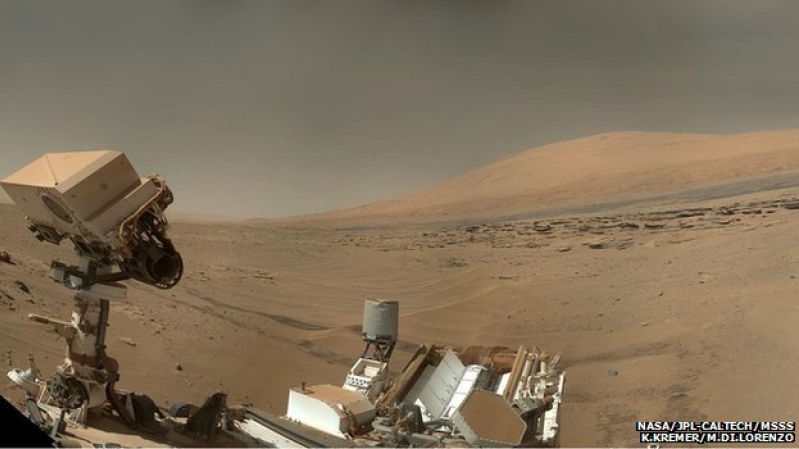
For the first time in history, NASA Curiosity rover will get an up-close investigation at Martian sand dunes. The sand formation will reveal the evolutionary past of Mars, and it may also hold clues about ancient life in the planet.
The rover is now heading towards the dark Bagnold Dunes. Estimates from NASA show that the investigation will be conducted in the next few days. The dark dunes are located in the northwestern foothills of the gargantuan Mountain Sharp.
Studying the Bagnold Dunes -- named after British military engineer and dune researcher Ralph Bagnold -- is important to understand how Mars evolved from what it is today. Measurements from Mars probes show that the dunes have a width of a football field and height of a two-story building.
NASA officials said these Mars sand are active. Observations found that some of the dunes are moving every year by as much as 3 feet (1 meter).
The planned investigation will not only analyze how these modern dunes move, but it will also help to interpret "the composition of sandstone layers made from dunes that turned into rock long ago," said Bethany Ehlmann from NASA's Jet Propulsion Laboratory, which is located in Pasadena, California.
Even though Mars probes have visited sandy swales in the past, no active dunes were recorded. The previous investigations did not have an opportunity to analyze the dunes up close.
By the time Curiosity reaches the Bagnold Dunes, the rover will collect sand samples from it. The probe has onboard instruments that can scrape sand to gather enough specimen. It will also collect samples from the surface and subsurface to know the difference.
In comparison with sand dunes here on Earth, scientists said that Mars' dunes have a different texture.
"The ripples on them are much larger than ripples on top of dunes on Earth, and we don't know why," said Nathan Bridges, a researcher from the Johns Hopkins University's Applied Physics Laboratory.
The researchers have models of Mars' sand dunes based on the lower air pressure from the planet. In the latest investigation, they will have the first opportunity to make detailed observations.
Previously, the rover discovered habitable lake-and-stream system in Mars. The rover's primary mission is to find out if Mars is suitable for hosting life.
The rover was launched from Cape Canaveral, Florida, on Nov. 26, 2011. The cost of the mission stands at $2.5 billion.







